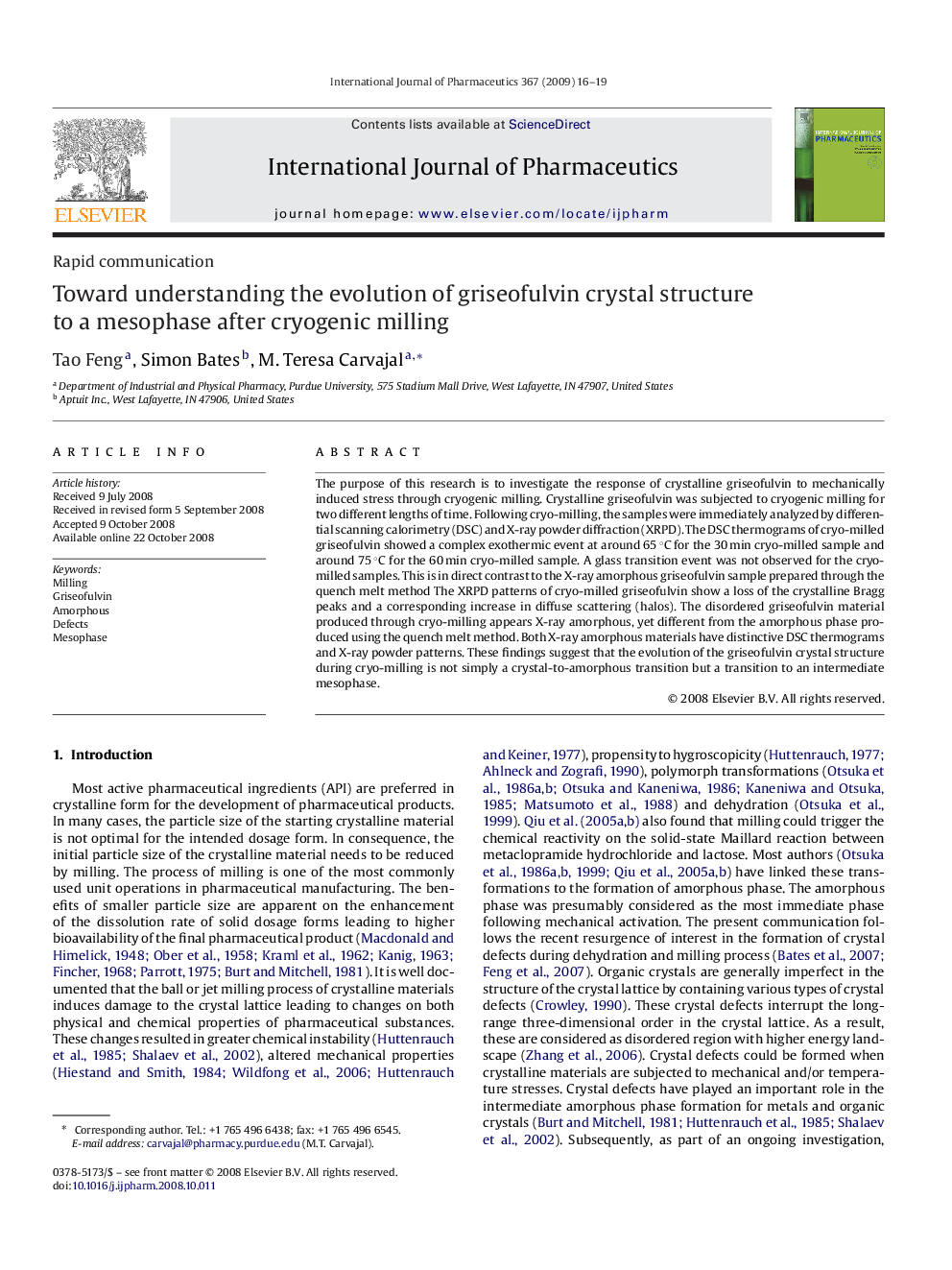| Article ID | Journal | Published Year | Pages | File Type |
|---|---|---|---|---|
| 2505002 | International Journal of Pharmaceutics | 2009 | 4 Pages |
The purpose of this research is to investigate the response of crystalline griseofulvin to mechanically induced stress through cryogenic milling. Crystalline griseofulvin was subjected to cryogenic milling for two different lengths of time. Following cryo-milling, the samples were immediately analyzed by differential scanning calorimetry (DSC) and X-ray powder diffraction (XRPD). The DSC thermograms of cryo-milled griseofulvin showed a complex exothermic event at around 65 °C for the 30 min cryo-milled sample and around 75 °C for the 60 min cryo-milled sample. A glass transition event was not observed for the cryo-milled samples. This is in direct contrast to the X-ray amorphous griseofulvin sample prepared through the quench melt method The XRPD patterns of cryo-milled griseofulvin show a loss of the crystalline Bragg peaks and a corresponding increase in diffuse scattering (halos). The disordered griseofulvin material produced through cryo-milling appears X-ray amorphous, yet different from the amorphous phase produced using the quench melt method. Both X-ray amorphous materials have distinctive DSC thermograms and X-ray powder patterns. These findings suggest that the evolution of the griseofulvin crystal structure during cryo-milling is not simply a crystal-to-amorphous transition but a transition to an intermediate mesophase.
